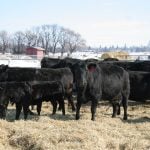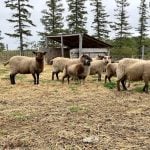A RARE bird has appeared on the agricultural horizon – a government
document that makes an interesting read.
The safety net review was prepared for federal and provincial ministers
of agriculture and released to them Jan. 24 to assist in deliberations
on a new national action plan for agriculture.
If you’ve ever wondered why something as “simple” as a workable safety
net has been so difficult to develop, this report has the answers. In
spades.
At first blush one wouldn’t think the complexities, the agonies and the
Read Also

Budget seen as fairly solid, but worrying cracks appear
The reaction from the agriculture industry to prime minister Mark Carney’s first budget handed down November 4th has been largely positive.
financial assistance that farmers know as agricultural safety nets
could be described and analyzed in a mere 173 pages. Why, farmer
applications for some of these programs have likely exceeded that
number.
Yet the report summarizes the status of the current menu of support
programs for Canadian farmers, which includes the Net Income
Stabilization Account, Canadian Farm Income Protection plan, crop
insurance, fall cash advances, spring cash advances and a host of
companion programs related to some or all of the above.
This report doesn’t have the answers for modifying existing safety nets
so they will be better able to carry farmers through to the arrival of
a new plan.
In fact, the bright light it shines on the whole farm income support
dilemma is enough to cast into shadow any hopes of a 2002 version.
Rather, the report suggests that modifying the existing array to
improve effectiveness would likely make the whole thing more complex.
It hails instead the challenge to “make significant changes in how
governments approach stabilizing the incomes of farmers and develop or
redevelop a new, improved set of risk management tools.”
The report shows that governments know the strengths and weaknesses of
the current safety net array. Farmer complaints have clearly been
recognized.
As an example, it analyzes one of the more successful safety nets, crop
insurance. About 65 percent of Canada’s land in crops is covered. It
provided $6.7 billion in coverage in 2001.
Further, a nine-year study shows the average net income of farmers with
crop insurance was nine to 15 percent more stable than farmers without.
Insured farmers had higher debt levels and higher net worth than those
without.
As for flaws, the report notes desire for higher maximum coverage
levels, lack of a cost-of-production component and its relative
ineffectiveness for horticulture, pasture and forage crops.
The safety net review is a useful overview. We know where we’ve been,
which is a guide to where we’re going.
And the suggestion to start anew may scratch farmers’ itch for better
safety nets in the future.
(See the safety net review by clicking here.)














